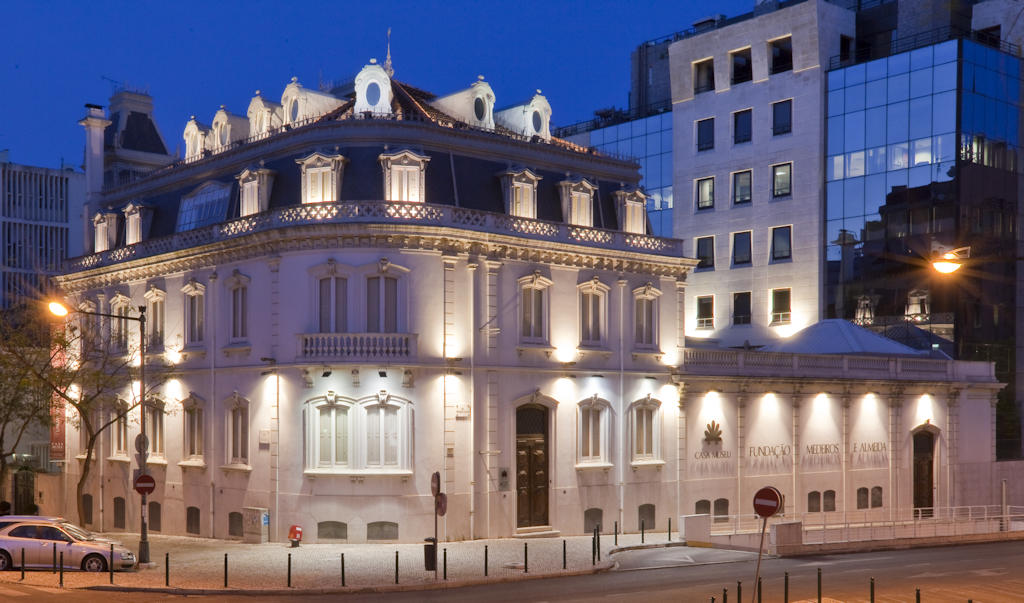What sets Casa-Museu Medeiros e Almeida apart is the harmonious blend of different decorative elements from various periods and styles. The collection spans from Chinese ceramics to Portuguese and French furniture, Dutch and Flemish paintings, watches and jewelry, textiles, silversmithing, and fans. With over two thousand works of art spread across twenty-seven rooms, the museum offers a comprehensive journey through centuries of artistic expression.
One of the standout collections within the museum is the Chinese Art collection. It includes remarkable pieces such as Han and Tang dynasty burial vessels, Ming dynasty porcelain vessels specifically made for the Portuguese market, and Qing dynasty artifacts like an imperial vase adorned with auspicious decoration and molded figures of European tribute-bearers. The collection also boasts rare Kangxi period nefrite chime stones and a monumental six-panel Coromandel lacquer screen from the late 17th century.
The Clocks and Watches collection is another highlight of the museum. It features a diverse range of timepieces from different eras, including a mid-17th century Gdansk amber hourglass, a night clock by renowned English clockmaker Edward East, a longcase grandfather clock by Thomas Tompion, and a pocket watch and carriage clock that once belonged to French general Junot and the Duke of Wellington. Notably, the collection includes a 1900 Grand Régulateur ormolu-mounted grandfather clock by François Linke.
Furniture enthusiasts will appreciate the exquisite pieces on display at Casa-Museu Medeiros e Almeida. Noteworthy items include Louis XIV ormolu-mounted tortoiseshell and engraved brass marquetry bureaus Mazarin by André-Charles Boulle, rocaille commodes marked by Antoine Criaerd, and a vernis-Martin commode attributed to Pierre Roussel. Additionally, there is a writing table by John Webb, a cartonnier desk by Joseph-Emmanuel Zwiener, and cabinets and consoles by François Linke, such as the famous "Mars & Venus" cabinet created for the Universal Exhibition of Paris in 1900.
The museum's Painting collection encompasses a diverse range of works from renowned artists. Visitors can admire Flemish painter Jan Brueghel's "The Halt", Pieter Brueghel the Younger's "The Tax Collector", Dutch landscapist Jan van Goyen's land and seascapes, Gian-Domenico Tiepolo's "Old Man with a sword", Jose Ribera's attributed work "Archimedes", and Jan Davidsz de Heem's "Still Life", among others. Portraits, historical scenes, and genre paintings by various artists further enrich the collection.
Lisbon.vip Recommends
Moving on to the Music Room, visitors are transported to the elegance of 18th-century France. The room is adorned with exquisite boiseries, delicate stucco work, and a stunning crystal chandelier. The centerpiece of this space is a magnificent pianoforte by Érard, one of the most renowned piano makers of the time. The room also showcases a selection of musical instruments, including violins, cellos, and harpsichords, as well as sheet music and personal correspondence related to music.
The Library is a treasure trove for book enthusiasts. With its dark wood paneling and ornate bookcases, it exudes a sense of scholarly ambiance. The collection comprises rare books, manuscripts, and historic documents, ranging from illuminated manuscripts and early printed books to letters written by historical figures. Visitors can marvel at beautifully bound volumes, such as early editions of literary classics, scientific treatises, and travel accounts.
The Casa-Museu Medeiros e Almeida also features a dedicated Jewelry and Silverware room. Here, visitors can admire an exquisite display of precious jewelry, including intricate necklaces, brooches, bracelets, and rings adorned with diamonds, pearls, and gemstones. The collection represents different periods and styles, showcasing the evolution of jewelry design throughout history. Silverware pieces, such as ornate tea sets, candelabras, and tableware, further enhance this remarkable collection.
Beyond the main collections, the museum also hosts temporary exhibitions, events, and educational programs that engage visitors and promote a deeper understanding of art and culture. The beautifully landscaped garden provides a tranquil oasis in the heart of the city, where visitors can relax and appreciate the outdoor sculptures and fountains.
Casa-Museu Medeiros e Almeida offers a captivating journey through the world of art, showcasing the diverse tastes and passions of its collector, António Medeiros e Almeida. With its remarkable collection of decorative arts, paintings, and cultural artifacts, the museum provides a unique glimpse into the past and a celebration of artistic expression. It is a must-visit destination for art lovers and anyone interested in exploring the rich cultural heritage of Portugal.
Map View



